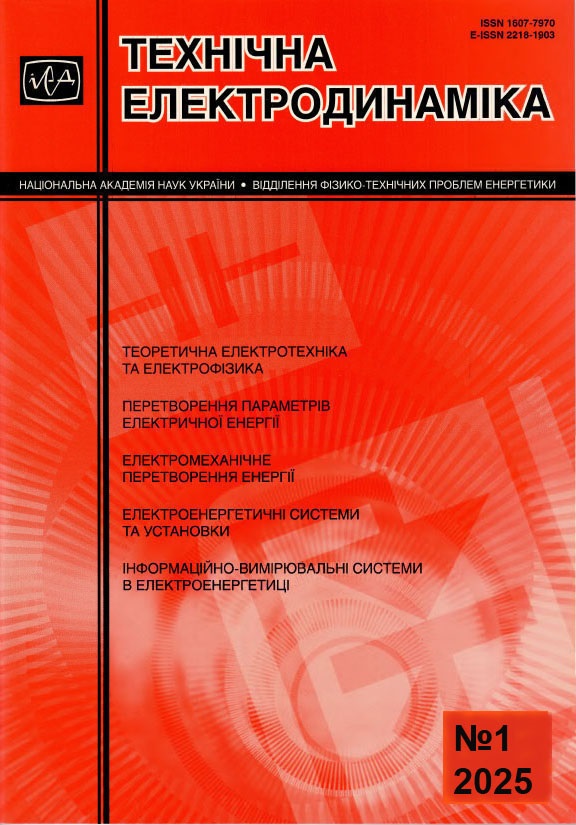Abstract
The influence of the structure of the electromechanical water supply system of a 12-story building (replacing one riser with two risers of different levels) on the efficiency of energy and water resource use was studied. A mathematical model of the electromechanical system has been developed and implemented in software, which takes into account the dependence of the floor consumption on the pressure value and allows determining the water needs of consumers based on the given cyclorama of the water consumption of the house. According to the information about the known parameters of the basic version of the water supply system, the parameters of one floor and the parameters of the variants of the building system with risers for servicing floors are determined: 1-12; 1-6; 7-12. The study was carried out taking into account the proposed time dependence of the change in the input pressure of the house. Means of generalized determination of the energy efficiency of the asynchronous motor of the water supply system based on approximate dependences of nominal efficiency on power and efficiency on the degree of loading have been developed. The comparison of options was carried out according to the formulated expression of the efficiency criterion, as the ratio of the daily useful effect of the water supply system to consumers to the cost of electricity and water consumed during the given period. According to the simulation results, the two riser option provides savings of 4% of water and 25% of electricity with their ratio in monetary terms 6:1. This justifies the priority of taking into account water savings when justifying the modernization of water supply systems (parallel zoning, adjustable electric drive). References 11, table 1, figures 3.
References
Huong N., Anh N., Huyen D., Son T., Cuong D. Optimization to water supply system design and operation scheme in high rise buildings. Journal of Science and Technology in Civil Engineering. 2018. Vol. 12. No 3. Pp. 123-131. DOI: https://doi.org/10.31814/stce.nuce2018-12(3)-12.
Jens N., Anders N. Water supply in tall buildings: Roof tanks vs. pressurised systems. Grundfos Water Boosting. 2014
Popovych O.M., Yashin R.V. Research of the energy efficiency of the electromechanical water supply system of a multi-story building with two-level risers. Tekhnichna elektrodynamika. 2023. No 1. Pp. 42-50. DOI: https://doi.org/10.15407/techned2023.01.042. (Ukr)
Suchacek Т., Tuhovcak L., Rucka J., Sensitivity analysis of water consumption in an office building. The First Conference of the International Water Association IWA for Young Scientist in Poland: Water, Wastewater and Energy in Smart Cities. 2018. Vol. 30. Issue 01002. Pp. 1-9. DOI: https://doi.org/10.1051/e3sconf/20183001002.
Yashin R.V. Determination of the parameters of the mathematical model of the water supply system of a high-store building under changes in the inlet pressure. Enerhetyka: Ekonomika, tekhnologii, ekologiia. 2024. No 3. Pp. 40-46. DOI: https://doi.org/10.20535/1813-5420.3.2024.314532. (Ukr)
United Nations. The United Nations World Water Development Report 2024: Water for prosperity and peace. UNESCO, Paris.
International Energy Agency. Electricity 2024. Analysis and forecast to 2026 (Report). Typeset in France by IEA, January 2024.
ExxonMobil. Energy demand: Three drivers, Report, January 8, 2024.
State building regulations of Ukraine, Internal water supply and sewerage, Part I. Design. Part II. Construction. DBN V.2.5-64:2012. Kyiv, Ministry of Regional Development, Construction and Housing and Communal Services of Ukraine, 2013. 122 p. (Ukr)
Pedrollo the sprinf of life. URL: www.pedrollo.com (accessed at 15.05.2024).
Popovych O.M. Simulation of renewable energy systems with seasonal heat accumulators. Vidnovliuvana enerhetyka. 2023. No 3. Pp. 115-126. DOI: https://doi.org/10.36296/1819-8058.2023.3(74)115-126. (Ukr)

This work is licensed under a Creative Commons Attribution-NonCommercial-NoDerivatives 4.0 International License.
Copyright (c) 2024 Tekhnichna Elektrodynamika


